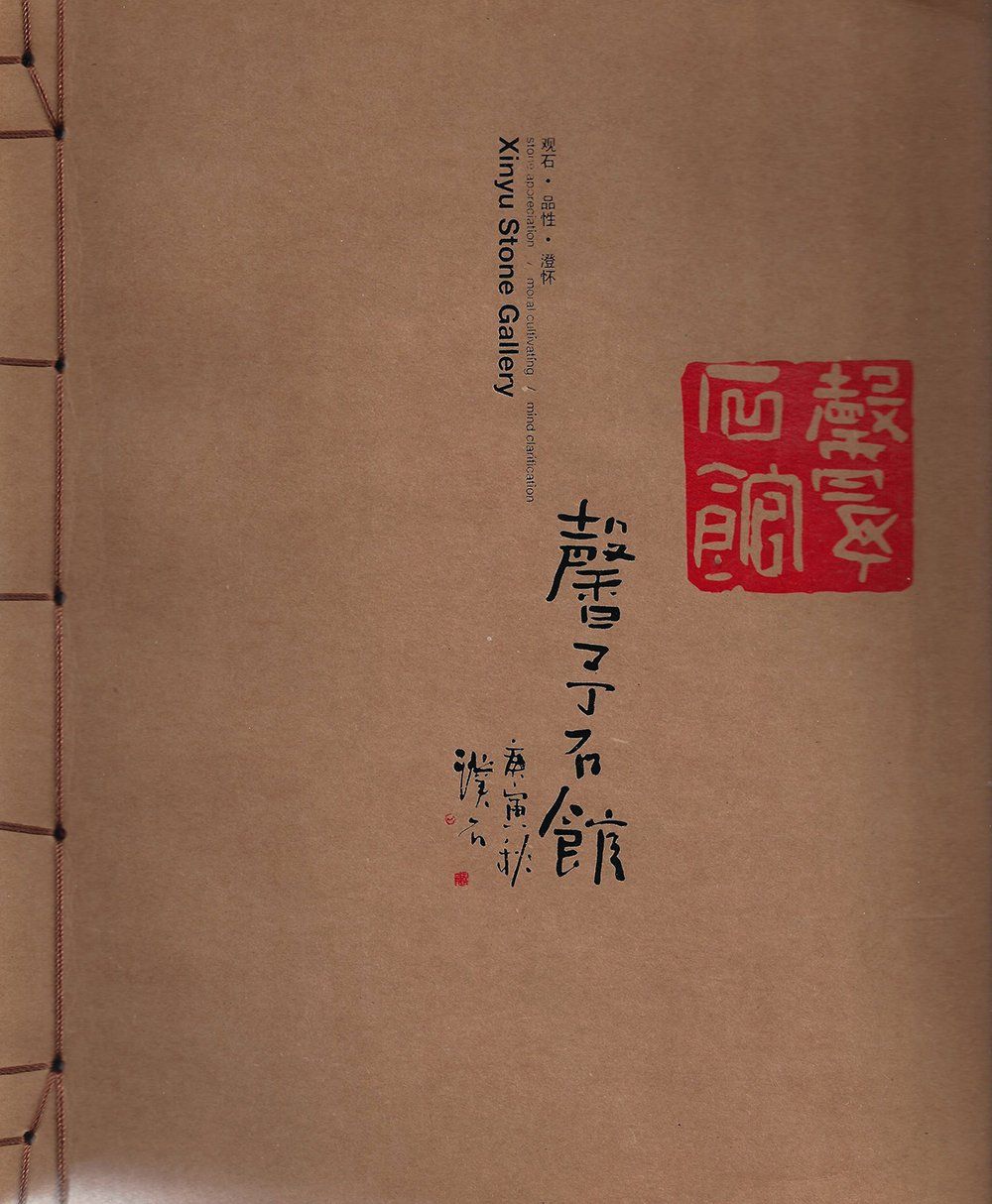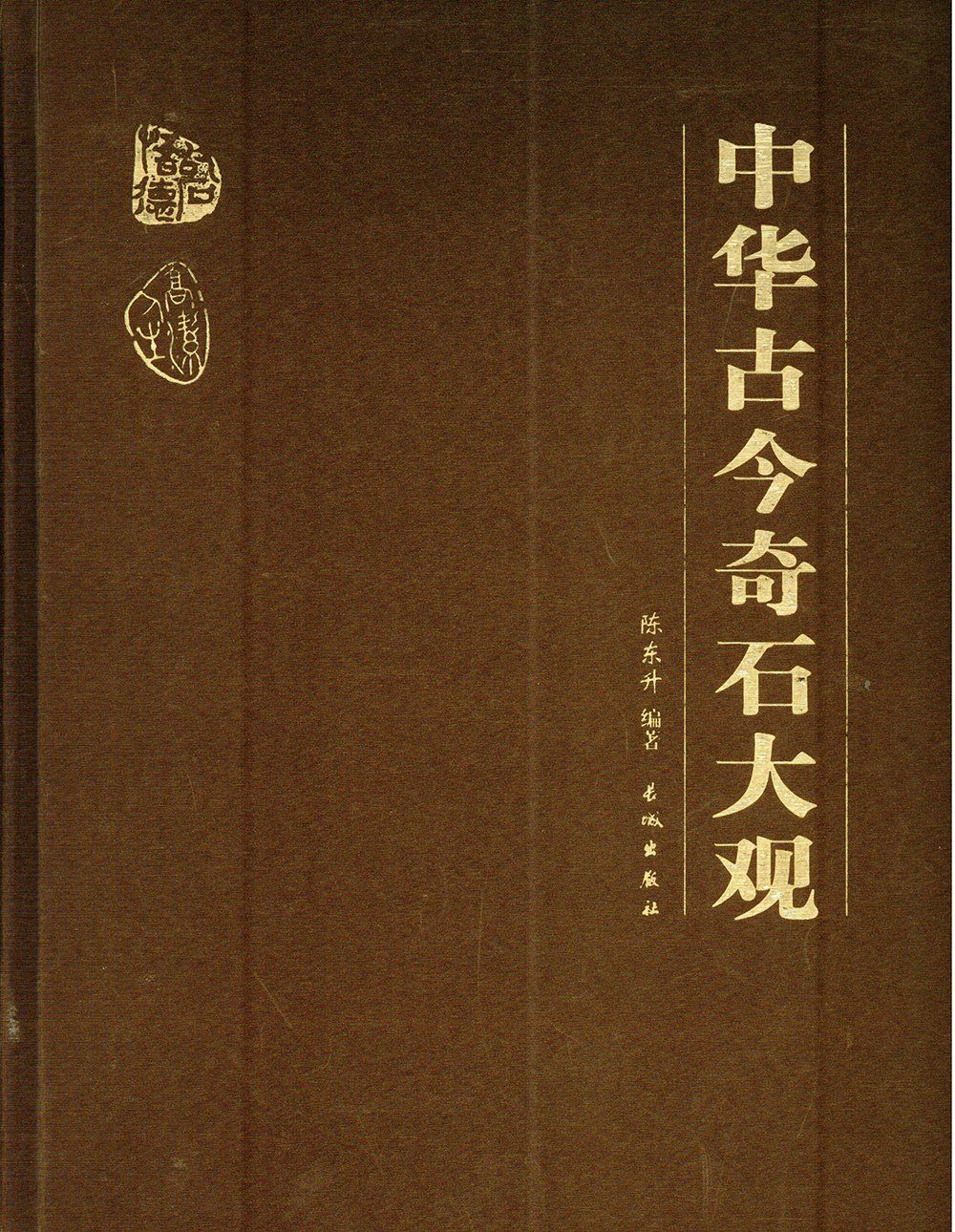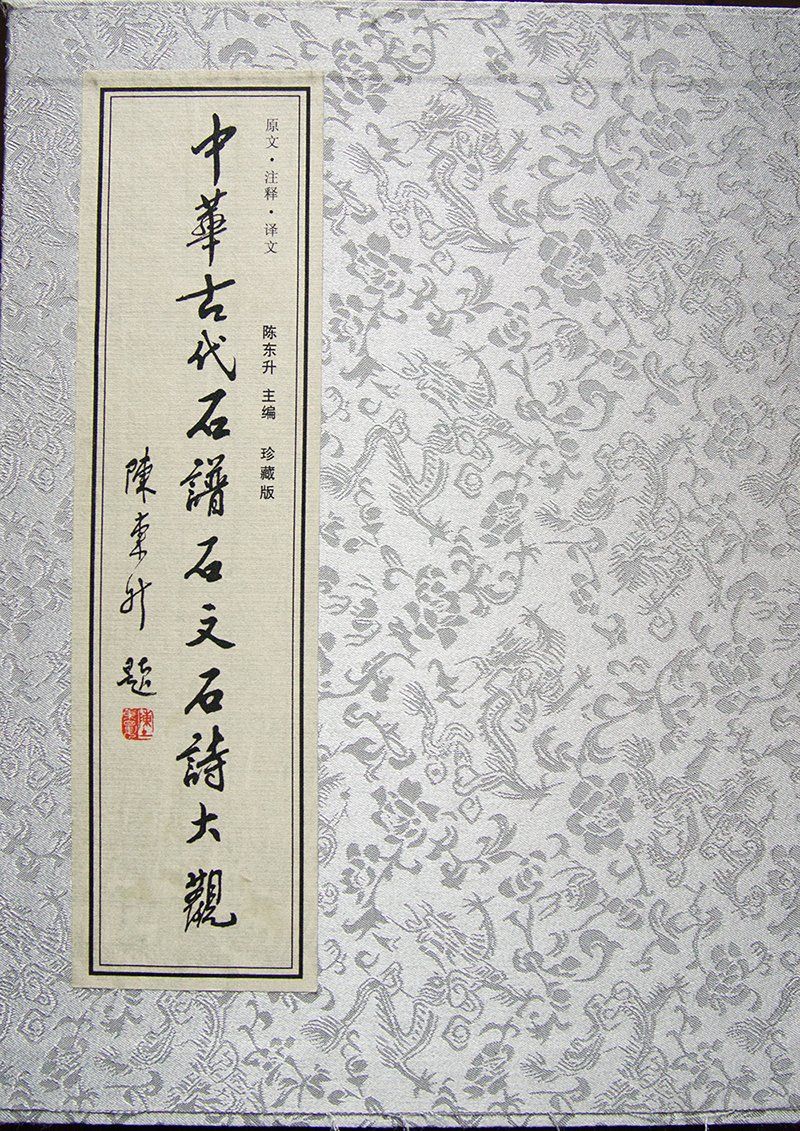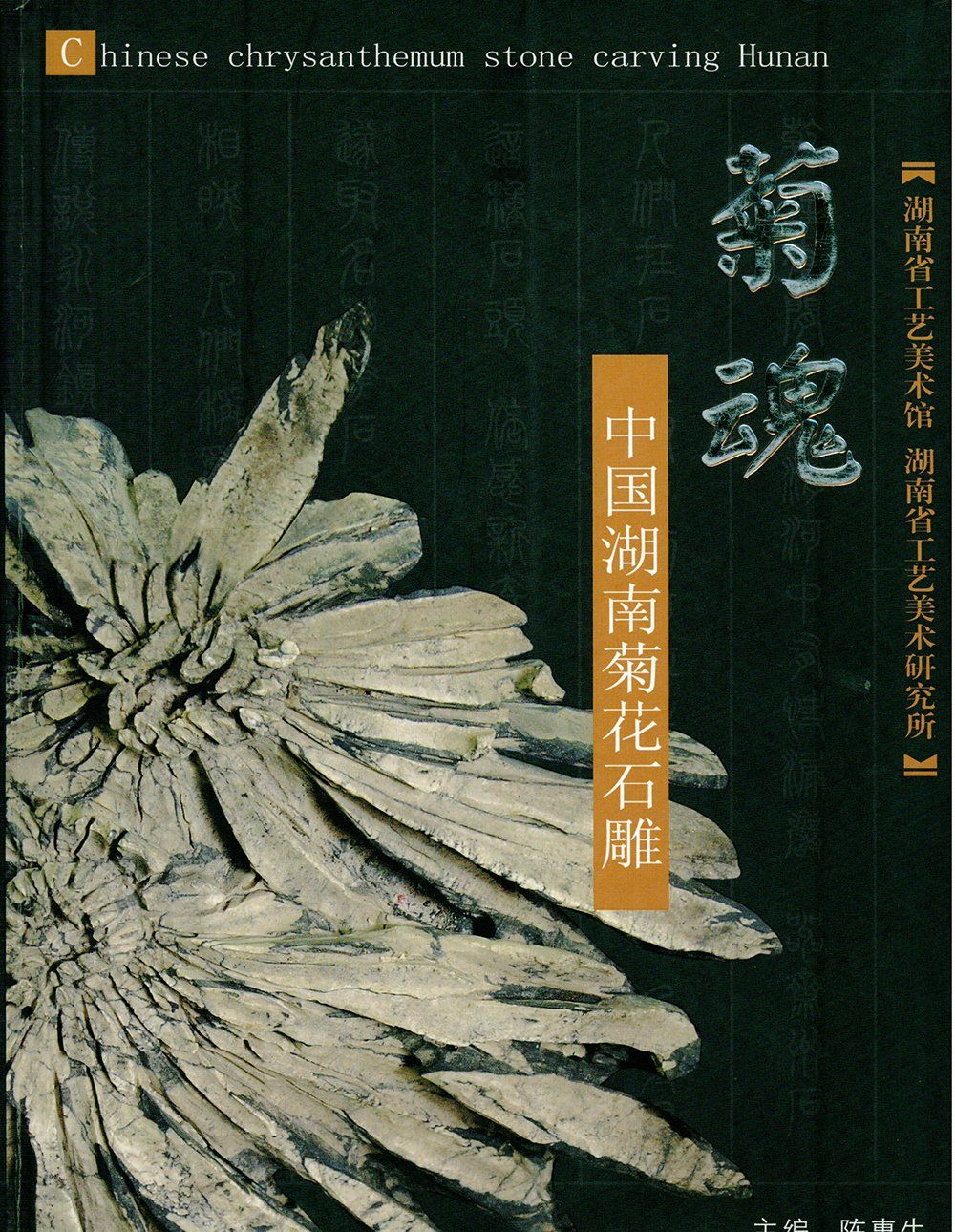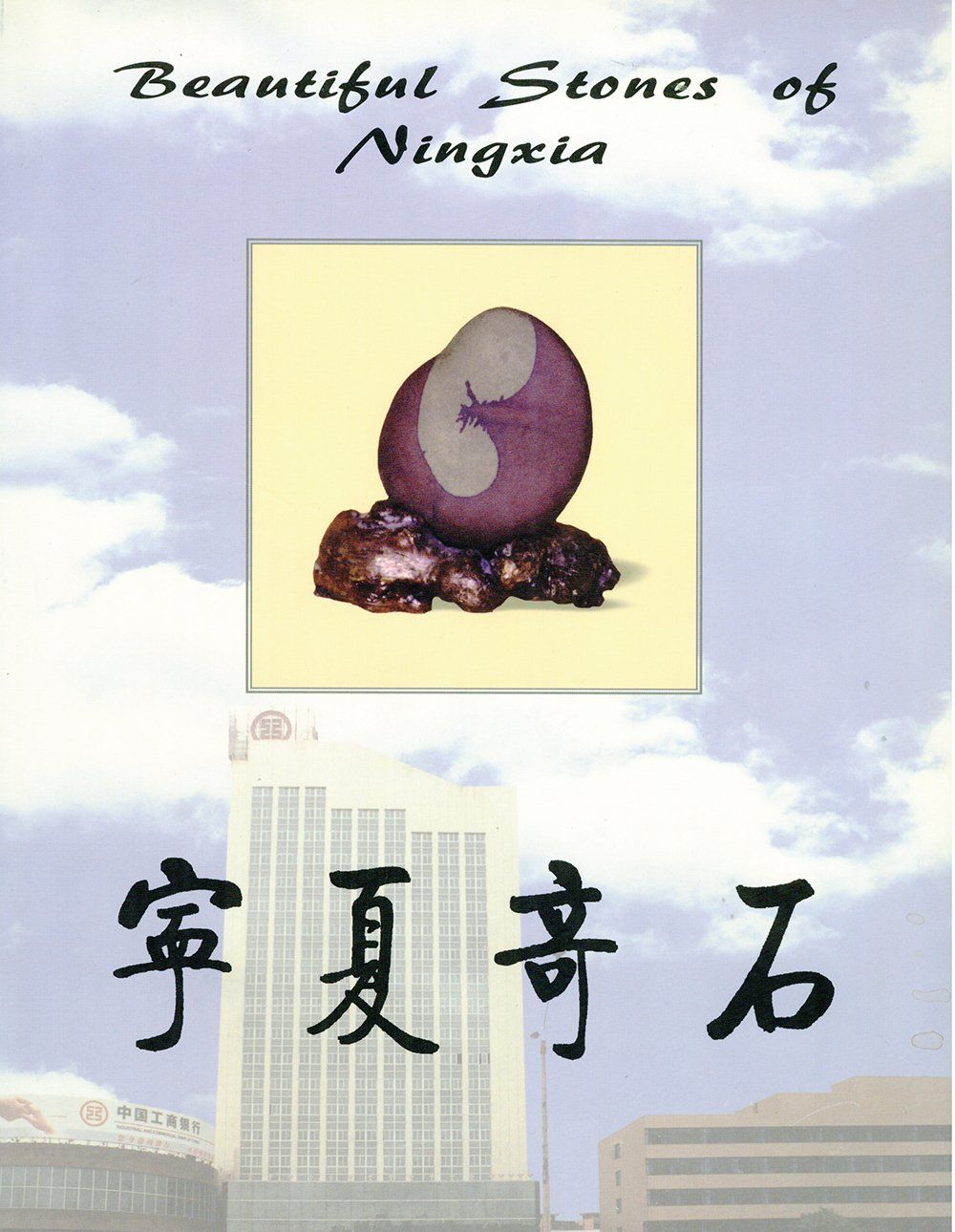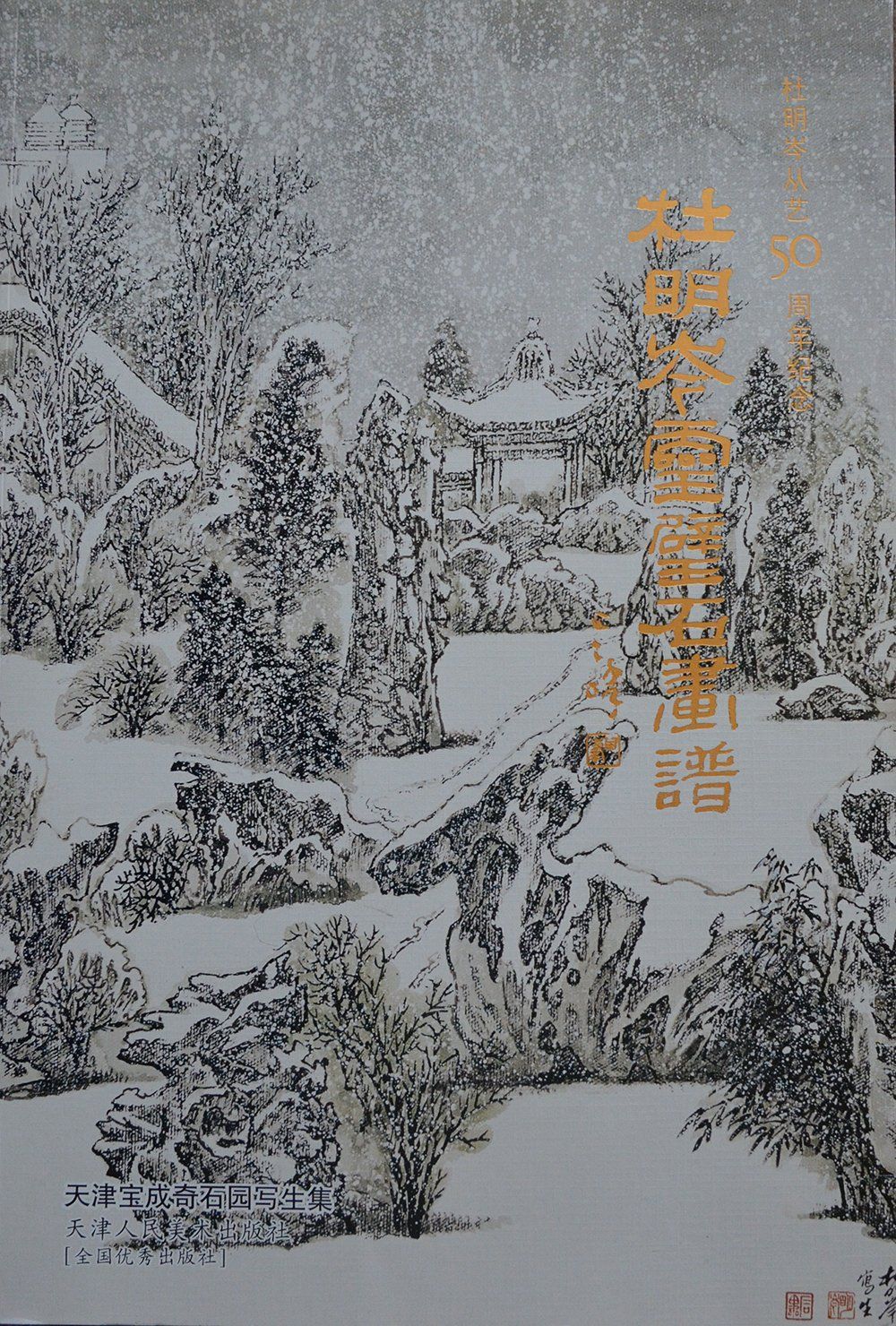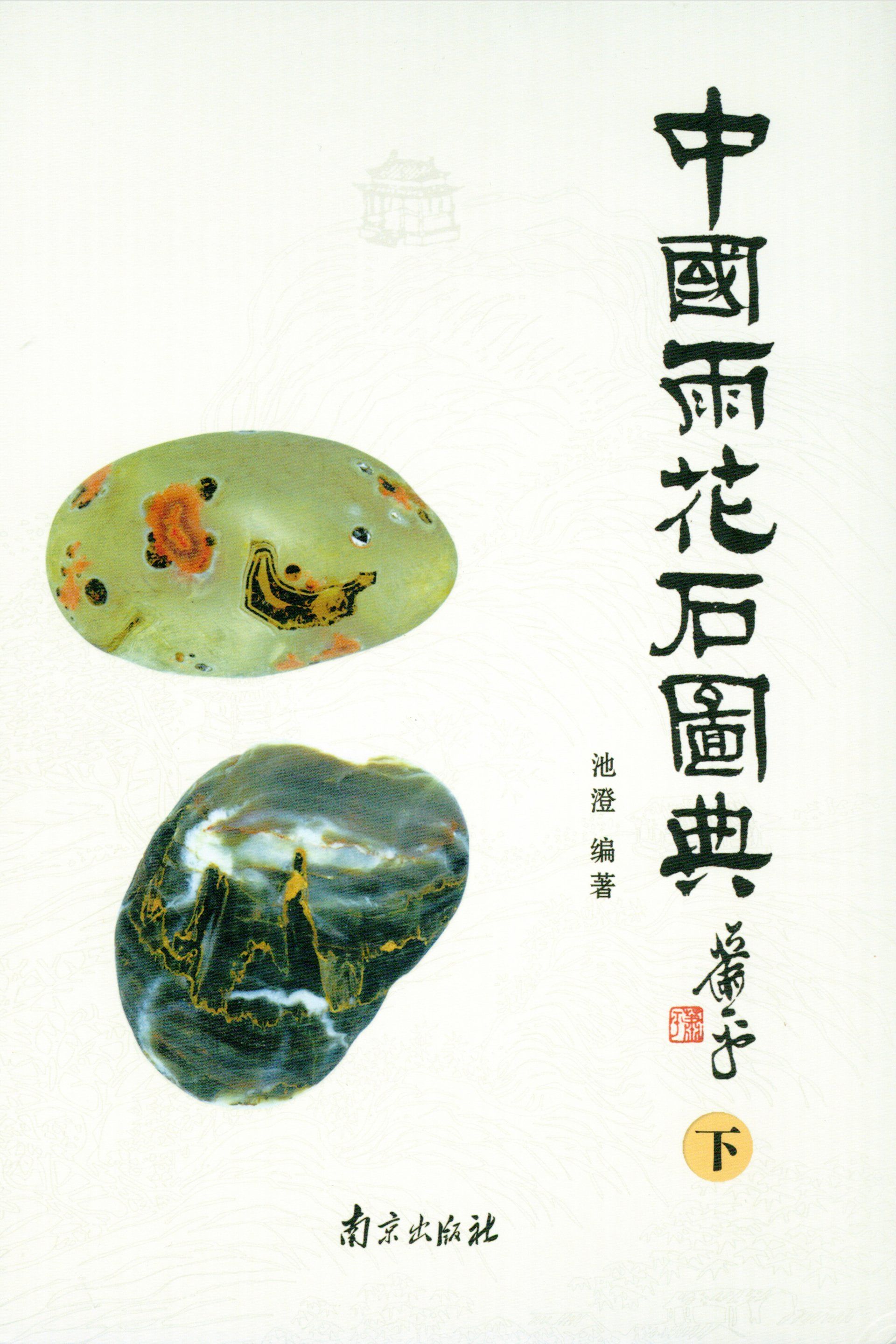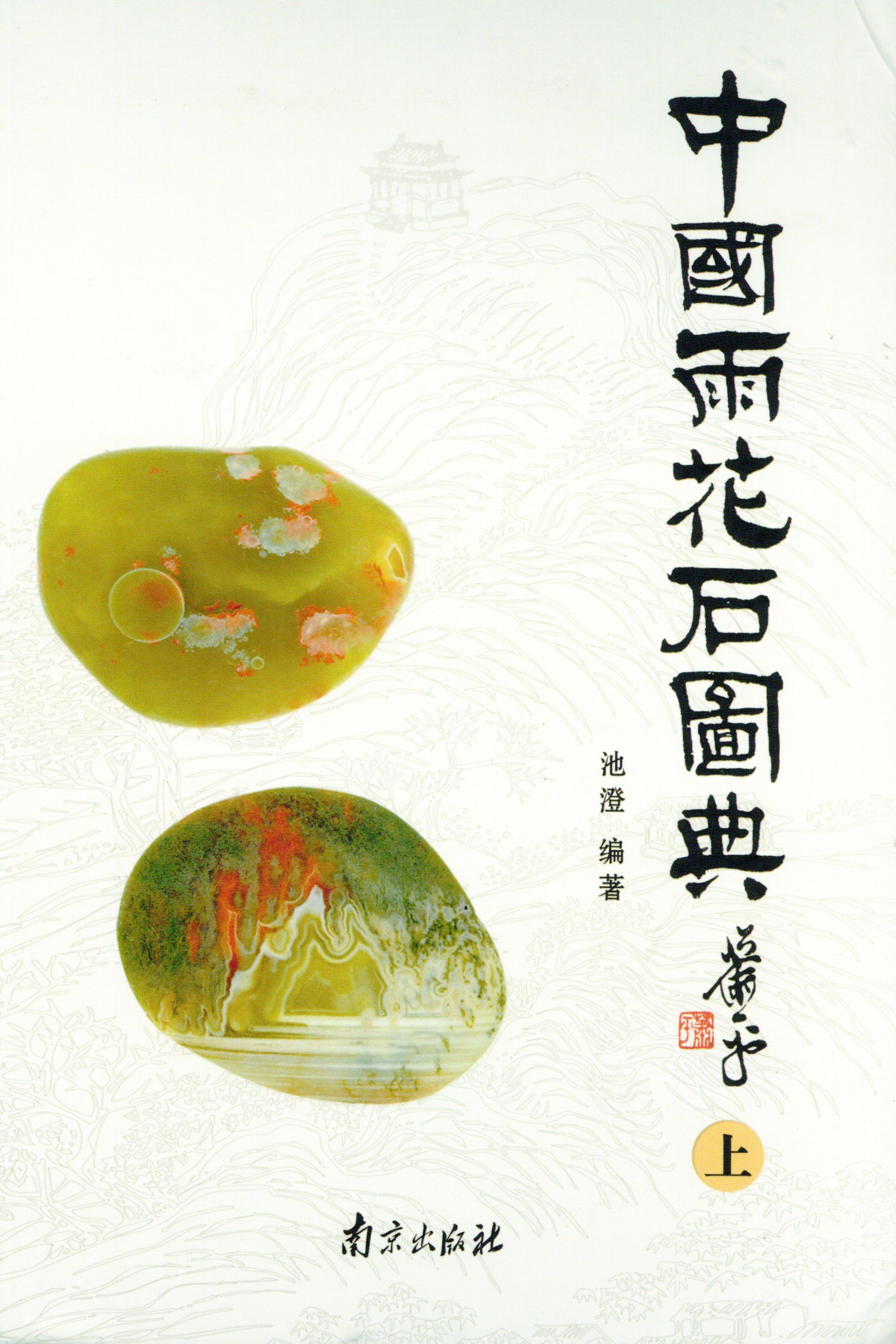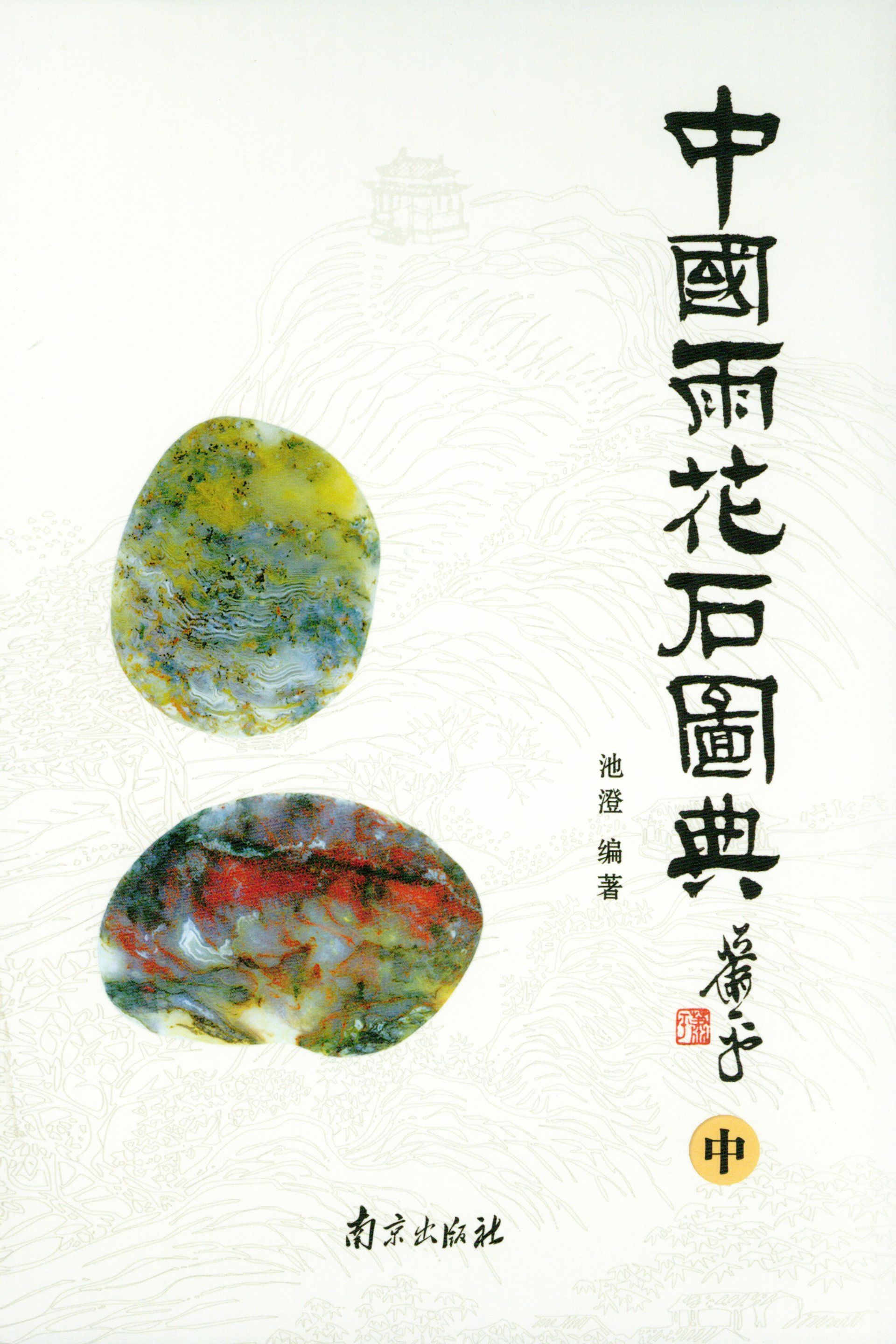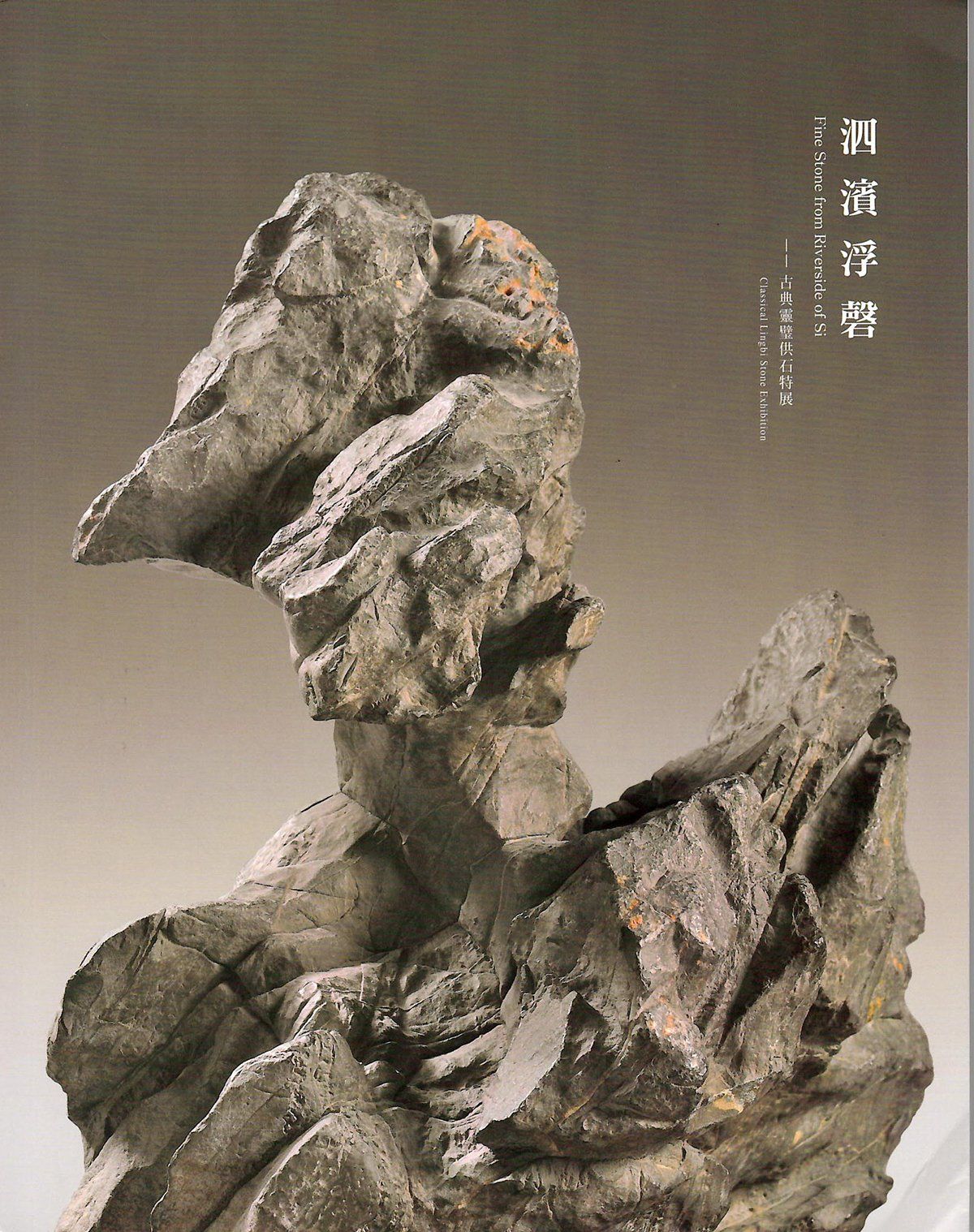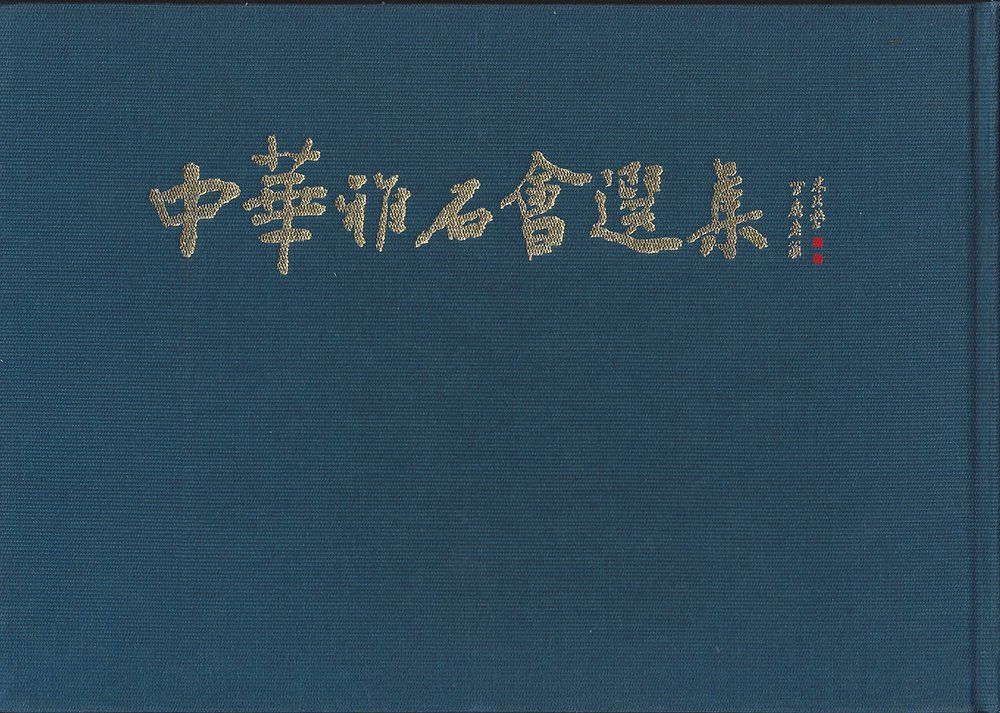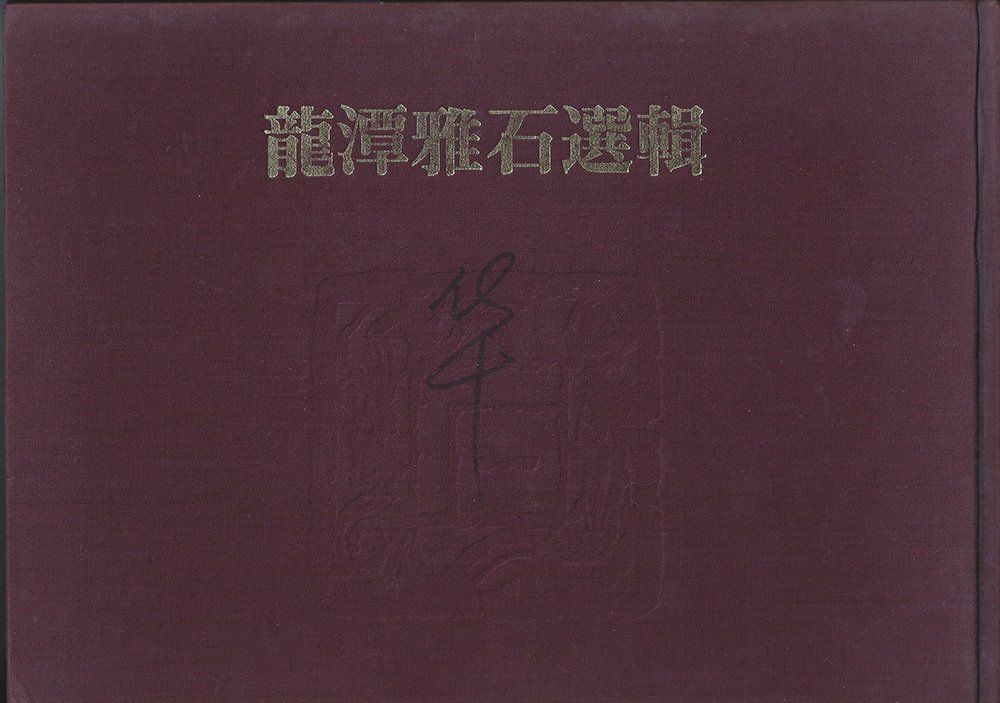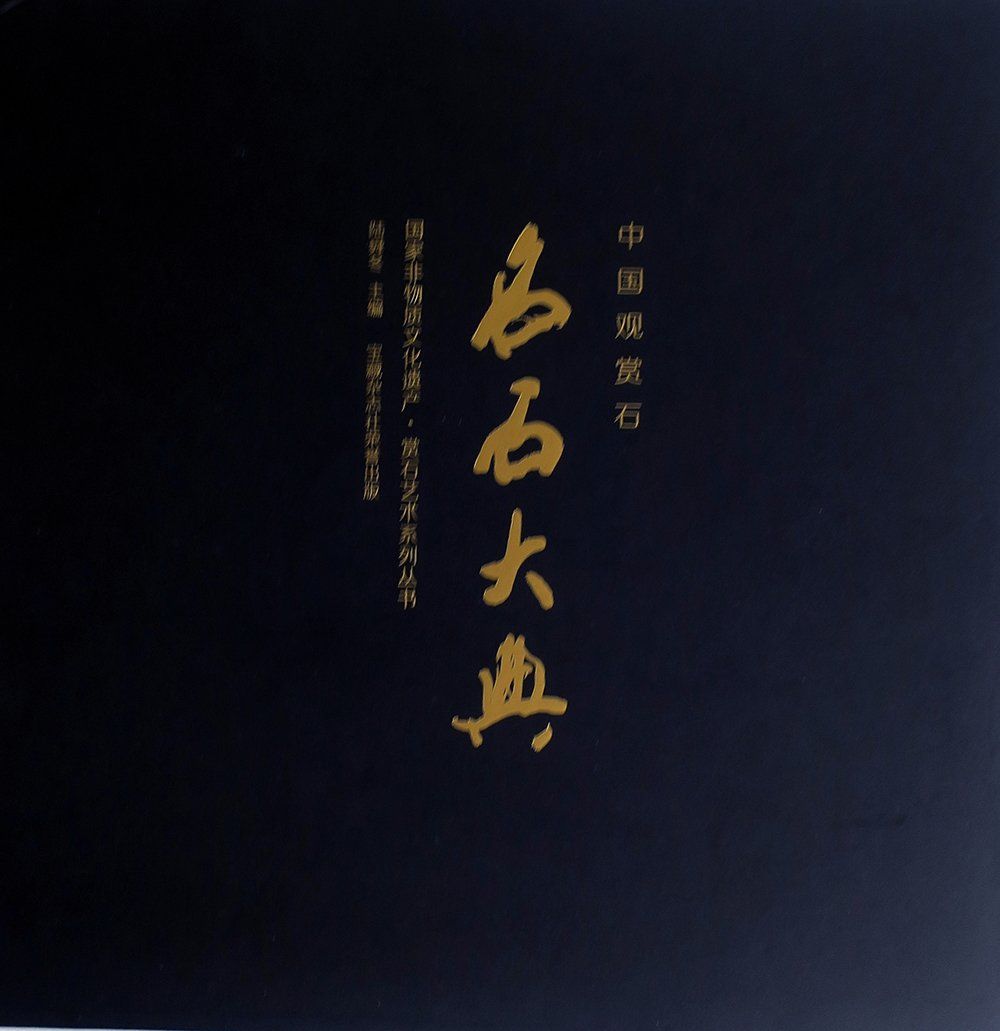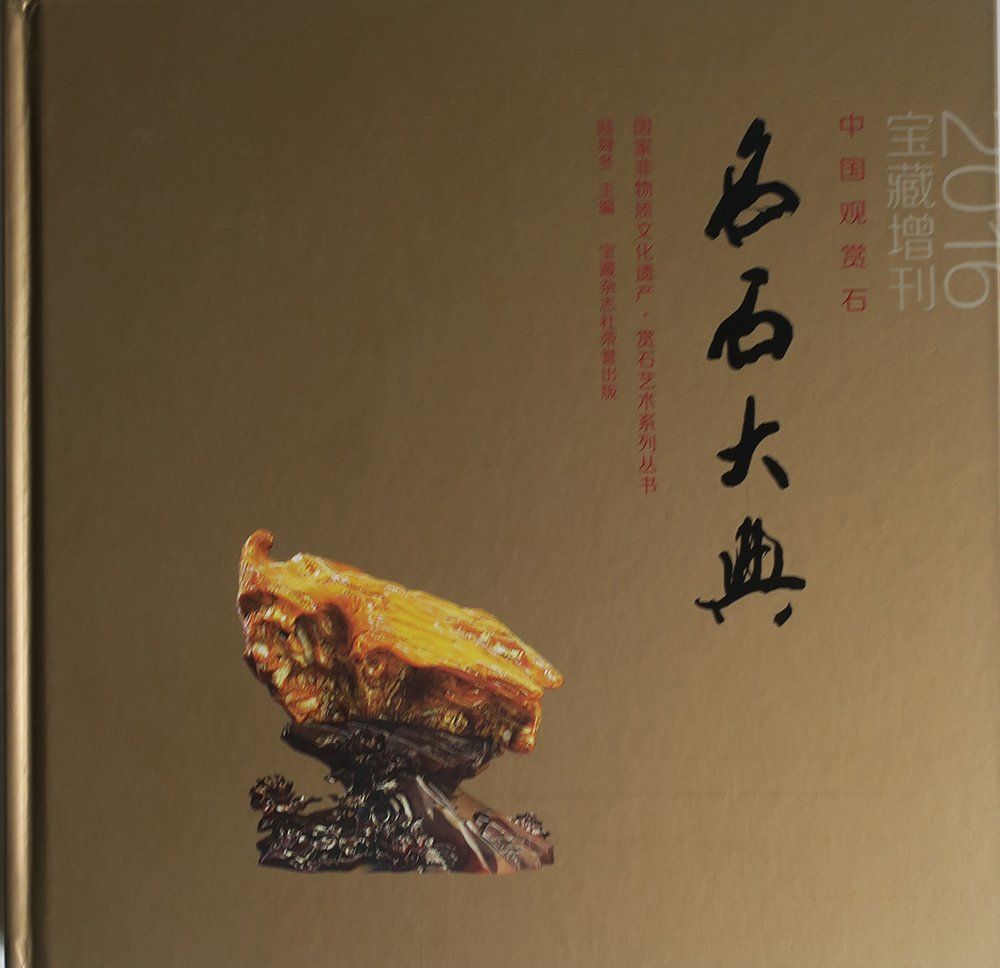CHINESE BOOK REVIEWS
Chi Chen Ed. 2011
Chinese Rain Flower Stone Picture Dictionary (Zhongguo yuhuashi tudian)
Collection of 4 Grand Classics of Famous Stones of Liuzhou
The city government of Liuzhou, a city in northern Guangxi province in southern China, made a serious, long-term commitment and investment over a decade ago to turn Liuzhou into the stone capital of China. The city stages a major international stone exhibition every two years, and some of the organizers have produced several outstanding books on stone appreciation. This includes Collection of Grand Classics of Famous Stones of Liuzhou, a series that started in 2002 with the first volume. At the time it was published it marked a new high in quality book production on stones. The second volume appeared in 2008, and volume three was published in 2010.
Liu Bo Li Ed. 2002
Vol. 1, Collection of Grand Classics of Famous Stones of Liuzhou
Wu Dan Ed. 2008
Vol. 2, Collection of Grand Classics of Famous Stones of Liuzhou
Huang Shao Long Ed. 2010
Vol. 3, Collection of Grand Classics of Famous Stones of Liuzhou
Qu Jun Xiong Ed. 2012
Vol. 4, Collection of Grand Classics of Famous Stones of Liuzhou
Cui Zhoucun 2008
Loashan Green Stones of China
Dali Bai Autonomous Province District Record Compiling Committee, 2014
Dali Stone Catalogue (Dali Shipu
Diao Huiqin 2008
Chinese Lingbi Stones Chinese Stone Appreciation Series
Ding, Wenfu 2010
Elegance of Stone Trays (Shi pen yagu)
Fan Nianlu 1995
Rare Stones of China
Feng, Guilin Ed. 2005
Photo Collection of Alexa Queer Stones
Ge Barong Ed. 2006
Rhyme of Yunnan Stones
Ge Baorong Ed. 2006
7th China Stone Appreciation Exhibition & International Stone Appreciation Exhibition. Excellent Collections.
Ge Baorong, Liu Tao & Zhang Jiahi 2009
China, National Treasures
Guo, Baolin & Zhang Yaoda Eds. 1989
Album of Rain Flower Pebble Treasure
Hasbagna S 2015
Magic Stones, Miracle Culture. Photo Collection of Alxa Queer Stones
He Zhiwu, Wu Huashuo, Eds. 2007
Elegant Stone Artifacts, The Best Collection of Dianbai Golden Wax Stone
Huang Jian & Zhong Ling Qiang 1998
Canon of Contemporary China’s Renowned Cultural Stone Collectors and Their Celebrated Art Works
Huang Xin 2004
Yangchun Malachite
Inner Mongolia Alashan Viewing Stone Association 2013
Photo Collection of Alxa Queer Stones
Jia Xiangyun 2008
Chinese Stone Appreciation Series: Chinese Taihu Stones
Jia Xiangyun Ed. 2010
2 vols. History of Chinese Stone Appreciation Culture
Jian Lianying 2013
Ruyuan Color Stones
Lai Renji 2016
China Kun Stones
Lai, Zhanjiang Ed. 2006
Yingshi
Lai Zhanjiang, Lin Chaofu, & Fan Guidian Eds. 2007
Purpose of Yingshi (Yingshi-zhi)
Li Jiazhen., Zhang Gangshung, & Yu Tiejie 1999
Zhonggo Juhuashi. Chinese Chrysanthemum Stones
Chinese University of Geosciences Publishing Co., Wuhan. 62 pp. 19.50 RMB.
A small format paperback that focuses on the chrysanthemum stones of China, particularly those from Hunan and Hubei Provinces. It provides excellent coverage of the stones from Liuyang, a county famous for its carved objects made from chrysanthemum stones from this region. A considerable body of data has been published on these stones since the volume was issued. It’s a valuable reference for those specializing in chrysanthemum stones, but likely of limited valuable to the general collector of Chinese stones. This illustrated volume contains both color and black and white photographs. It is long out of print and likely difficult to find.
Li, Shigui 2008
Heaven Endowed Jade Pebbles. Precious Rain Flower Pebbles from Luhe
Jiangsu People’s Publishing House. Nanjing. 184 pp. ISBN: 978-7-214-05427-2. 280 RMB when published.
This handsome book was produced by the District Party Committee and District Government of Luhe to coincide with the 29th Olympic Games in Beijing in 2008. The large format, 29 x 29 cm, and beautiful design are well suited to feature outstanding Rain Flower stones from Luhe. Luhe and Luhe District are located about 45 km from Nanjing and is home to a giant gravel mine, the present day source of these stones.
The stones illustrated in this volume are grouped in five sections—landscape, people, animals, peculiarity, and plants—based upon the interpretation of the pattern of each stone. These five groups comprise the higher valued Rain Flower stones. The peculiarity section includes stones with interesting patterns or rare and unusual colors forms. Each page has only one or two stones illustrated per page, rarely three. This allows viewer to examine every detail of each stones. The name of each stone is given in Chinese and English. A brief statement or poem and the dimensions are also given for each stone. The photograph, design, printing and binding are all excellent.
Li Shuhua. 2019. 2nd Edition
A Cultural History of Chinese Penjing
Rating: Excellent, a valuable reference for viewing stone connoisseurs as well as for penjing and bonsai practitioners.
Chinese Forestry Publishing House. Beijing. 712 pages. ISBN: 978-7-5219
This is truly a monumental publication of importance to the viewing stones and penjing/bonsai communities. This massive volume traces the history of penjing from its earliest days to the present. This major undertaking took many years of study and gathering data, and the result of this second and greatly enlarged 2nd edition of Li Shuhua's Cultural History of Chinese Penjing. Li is a genuine scholar, having obtained his Ph.D. degree from Kyoto University, one Japan's leading institutions of higher learning.
Most people do not realize that viewing stone appreciation has a common origin with that of stylized trees in pots. This book begins with the early indications of penjing and shangshi culture forming in the Zhou dynasty (1046-256 BCE) and presents the data for their development in the Six dynasties period (220-589 CE). During the following Tang dynasty (618-907 AD), stone appreciation and penjing were popular and documented in writings. Li continues to trace the growing maturity of penjing culture in succeeding chapters to and including modern China. He then records how penjing spread internationally.
This second edition is truly a monumental work pulling together the vast information about these subjects into one work. Li's efforts should receive greater international recognition for his achievements in making this information available. Unfortunately this important work lacks an English translation.
This volume is generously illustrated with reproductions of various works of art.
Li Yunsheng 2016
Collection of Grand Classics of Famous Stones of Liuzhou Vol. 5
Li Zhenkui 2014
Marble Paintings Glorifying Da Li. On Marble
Liang Zhaochu Ed. 2018
Qiungwan (Playful Items): Sleeping Clouds on the Stone
Lin Youlin, 1613
Suyuan Shipu
Rating: Excellent, a must for people working to become viewing stone connoisseurs.
Reproduced from the original by the Guangling Publishing Company, Yongzhou. 2006. 4 volumes. ISBN: 978-7-80694-209-3.
The purpose of reviewing a 407-year-old book is to acquaint readers with sone of the most influential books ever written on viewing stone appreciation. While this work was not the earliest volume solely on appreciating stone for their aesthetic qualities, it was the first illustrated book published. The Suyuan Shipu or Plain Garden Stone Catalog consisted of four volumes with 249 illustrations and text of 102 kinds of stones. The author, Lin Youlin (1578-1647), wrote this work in 1623 while serving as governor of Long'an province (now the northern part of Sichuan province). Lin Youlin was an elegant, gracious gentleman with good manners and a keen interest in viewing stones, calligraphy, and painting.
This work is a compilation of known information about viewing stones in the early 17th century. According to Kemin Hu (Scholar's Rocks in Ancient China, 2002), Lin Youlin reportedly included illustrations of stones owned by Mi Fu and Su Shi. Illustrations of well-known stones like Lingbi, Taihu, and Ying are illustrated together with many small stones that played an important role in the early Chinese history of stone appreciation in China. Suyuan Shipu influenced viewing stone theory at the time of publication and hundreds of years afterward. The illustrations are well-defined and with sufficient details that many types of stones can be identified. This book also became an important reference for stone painters in the late Ming and Qing dynasties. Different later editions were published. Some of these editions reached Japan, where he influenced early Japanese views on stone appreciation.
Many editions of this work have been reprinted and are available to current readers. We recommend this larger format, four-volume reprint rather than other reprints.
Liu Daorong 2006
Introductory Level Encyclopedia of Stone Collection
Liu Daorong 2007
Complete Collection and Appreciation of Chinese Fantastic Stones
Liu Daorong 2013
Fantastic Stones: Collection and Introductory Encyclopedia
Liu Daorong and He Ping 2014
Elementary Encyclopedia to Balin Stone Collection
Liu Renniao, Ed. 2006
Monumental Collection List of Chinese Ying Stone
Liu Yong Chuang 2014
Appreciation of Chrysanthemum Stones
Lu Shundong 2016
Chinese Viewing Stones. Grand Illustrations of Excellent Stones
PRC Education Department Ed. 2008
Cang Pin. Getting to Winter, Breeze on Stones
Ren David 2000
The Imperial Rocks
Ren David 2002
Classical Chinese Rocks
Ren Duan 2012
Appreciation of Water Grass Flowers in Yellow Dragon Jade
Shanghai Viewing Stone Association. Eds. 2020
2019 Hai Shang Shi Yu (2019 Shanghai-style Stone Stories)
Shanghai Viewing Stone Association, Shanghai. 250 pages, No ISBM.
This book, a catalog of small stones exhibited from November 22-28, 2019, in Shanghai, is a delightful blend of traditional and contemporary stone display methods. Shanghai-style Stone Stories was one of the last significant displays of Chinese stones before the COVID-19 pandemic shut down exhibitions and major international stone conventions throughout China. The Shanghai Viewing Stone Association published this volume in February 2020.
In Shanghai-style Stone Stories, several traditional table-style bases are interspersed among the more numerous and amazingly creative modern-style bases. Not everyone likes these intricately carved combinations of a base and display table. However, I find them very appealing and cleverly done. I also like the emphasis on smaller stones, many 30 cm or less. These smaller stone displays are better suited for apartments and smaller homes and for contemporary lifestyles. Most of the bases are not subtle and subordinate to the stone. Instead, they are more obvious and combine with the stone to convey a message or evoke feelings in the viewer.
This hardbound volume is well-designed and produced. The photographs are sharp and displayed one stone per page, allowing viewers to study each display's detail. Accompanying information about each stone and display is included.
Rating: Excellent; this provides a window to the types of stones and displays that are in vogue in China at this time.
Shen Guo Qing Ed. 2012
Chinese Ornamental Stone
Shi Xin Ed. 2008
Desert Rare Stone Treasures
Shou Jiahua 2007
Viewing Stone Introduction
Shou Jiahua Ed. 2008
Fine Elements and Cream Developed Over Time
Shou Jiahua 2016.
China Stone Catalogue
Book 2: China Stone Appreciation Cultural History: contemporary summaries of the major stone catalogues of the Chinese dynasties (194 pgs.).
Book 3: Distribution of Chinese Viewing stone resources (353 pgs.)
Book 4: Chinese Viewing Stones Illustrated I (395 pgs.)
Book 5: Chinese Viewing Stones Illustrated II (383 pgs.)
Book 6: Chinese Viewing Stones Illustrated III (353 pgs.)
Shou Jiahua & Wang Xiancheng. 2021
The Concise View Stone Dictionary
Baozang Publishing Company, Beijing. 255 pages, ISSN: 1672-8416. 78 RMB when published.
China has the world's largest and most active community of viewing stone enthusiasts. The View Stone Association of China recognizes more than 600 different types of stones collected and appreciated for their aesthetic qualities. The number of stone types has expanded considerably since the mid-1970s. This valuable reference helps to unify and clarify the definition of these types of stones, along with a plethora of associated words and terms used in the collection, display, and appreciation of Chinese stones.
This dictionary was assembled by the View Stone Association of China (VSAC) staff, with Shou Jiahua and Wang Xiancheng serving as senior editors. Madam Shou served for many years as the chair of VSAC each entry in this dictionary is in Chinese and English, although the brief definition of each term is given only in Chinese. The English names serve as a major aid for non-Chinese audiences. For example, If you want to know the difference between Lingbi pattern and Lingbi texture stones, this book is for you.
The Concise View Stone Dictionary is for people who wish to develop a more in-depth understanding of Chinese viewing stones. The definitions reflect modern interpretations and may or may not be in agreement with earlier understandings in the earlier dynastic period of Chinese history.
Rating: Excellent, a valuable addition to the vast literature about Chinese viewing stone appreciation.

